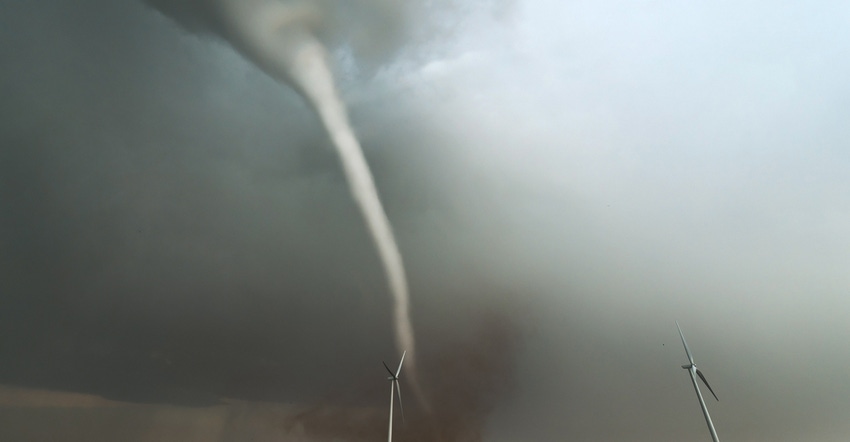
Springtime in Kansas doesn’t just bring new calves and green wheat—it also brings dangerous severe weather events.
Chip Redmond, Kansas State University meteorologist, reminds everyone to have a plan in place so that they can better protect themselves, their families and their properties in severe weather.
Have a plan. Write down what you will do in various emergencies, and practice your plan with your family and staff. Have a weather radio to monitor alerts, or some other means of getting alerts from media.
Take shelter. Know where you’ll take shelter. Remember, the safest place is the lowest central location in the home, he says. If there is no basement available, the next best is a central hallway or bathroom. Always stay away from windows.
Have a “go bag.” Make sure the bag is packed with medicines, extra clothes, food, water and power supplies for your cellphone or other electronics. Have one for each member of the family. And include supplies for family pets.
Stay low. If you’re caught outside in a lightning storm or tornado, never shelter under trees, and avoid porches and overhangs. Don’t try to outrun tornadoes in your car. A ditch can be a shelter from flying debris if you can’t get inside.
Avoid electricity. Lightning can travel through water and electrical wires, even if a strike is away from your house. So, stay off electronic devices that are hooked into a wall outlet, and stay out of the shower or other water sources.
Avoid water on roadways. It might be tempting to drive through water on the roadway, but just 6 inches of water can move a car effectively, Redmond says. And you don’t know the condition of the road under that running water. The best advice is “turn around, don’t drown,” he says.
“Practicing and having a plan saves lives,” Redmond says. To learn more about staying safe in weather emergencies, visit the National Weather Service at weather.gov/safety.
K-State Research and Extension contributed to this article.
About the Author(s)
You May Also Like






